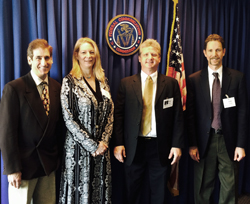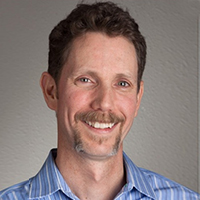In early February, a group of professional audio veterans traveled to Washington, D.C., for a series of meetings with the FCC to voice concerns about the current and future regulation and operation of wireless microphone systems.
The group was led by Mark Brunner of Shure and Roger Charlesworth of the DTV Audio Group, and included Joe Ciaudelli of Sennheiser, Henry Cohen of CP Communications, Jackie Green of Audio-Technica, Louis Libin of Broad Comm, Kevin Parrish of NBC Network News, Brooks Schroeder of Frequency Coordination Group, Jeffrey Willis of ESPN, and yours truly, along with a few others.
We began each meeting by describing the growing public demand for more sophisticated, complex professional productions in entertainment, news, sports and business that require increasing use of wireless mic technology. In fact, we pointed out, this growth in content is what fuels the engine of growing demand for mobile broadband.
Central to this discussion is that the UHF band is critically important to support wireless mic operations today. Even without the upcoming spectrum changes, users and coordinators are facing serious shortages of UHF spectrum needed to support live events. Due to propagation attributes, the UHF band has been the preferred spectrum choice for wireless mics for decades.
We reiterated that as a result of the mandated transition of wireless mics out of the 700 MHz band in 2010, many pro users have concentrated operations in the 600 MHz band now targeted for the incentive auctions per Congress’ passing of The Middle Class Tax Relief and Job Creation Act of 2012. Manufacturers, frequency coordinators and users have diligently responded to the continuing shrinkage of clear spectrum by working together on band planning and coordination strategies, driving technology development to increase efficiencies, preparing to share spectrum by using the geo-location databases, and encouraging use of non-UHF spectrum suitable for some applications.
For longer term planning purposes, we pointed out that these parties continue to explore flexible uses in a range of other spectrum bands with the potential to support wireless mic operations, provided that changes are made to technical and legal requirements and incumbent uses. Everyone involved will continue these efforts while recognizing that identifying non-UHF spectrum and achieving all changes necessary to make such spectrum available may take years and is not likely within the timeframe of the incentive auctions and resulting broadband uses of the 600 MHz band.
In planning for the further reduction of available UHF spectrum, we discussed how the two (2) reserve UHF TV channels dedicated to wireless mics in each market provide critical clean spectrum to pro users, and stressed the need to preserve them in the UHF and/or high VHF bands.
Further, we expressed support for new rules that would permit pro users to operate in the proposed guard bands and mid-band gap in the 600 MHz range, with priority through geo-location databases that would enable users access to expanded frequencies for the duration and at the location of large events. Another point we raised is the need to align VHF wireless mic rules with service rules applicable to UHF mics to make VHF a more suitable band for pro audio use.
We also highlighted that the current Part 74 rules are grossly out of date and should be revised so that all pro wireless mic operations are eligible for licensing. This change would ensure that users in touring, theatrical, concert, church, government and municipal facilities, and other productions will be covered by a Part 74 license that enables flexible and efficient use of the geo-location database.
Finally, the issue of compensation for users potentially displaced from the 600 MHz band, should the incentive auctions be successful, was discussed. The group believes that users who recently replaced 700 MHz equipment with new wireless mics in the 600 MHz band should receive proceeds from the incentive auctions covering the pro-rated value of this displaced equipment.
These meetings are part of an ongoing dialog between pro audio interests and the FCC, and we feel that it’s important to know how manufacturers and other leaders within the industry are working behind the scenes towards mutually beneficial rulings. Only time will tell how we fare in our efforts.
Karl Winkler is director of business development at Lectrosonics and has worked in professional audio for more than 20 years.















